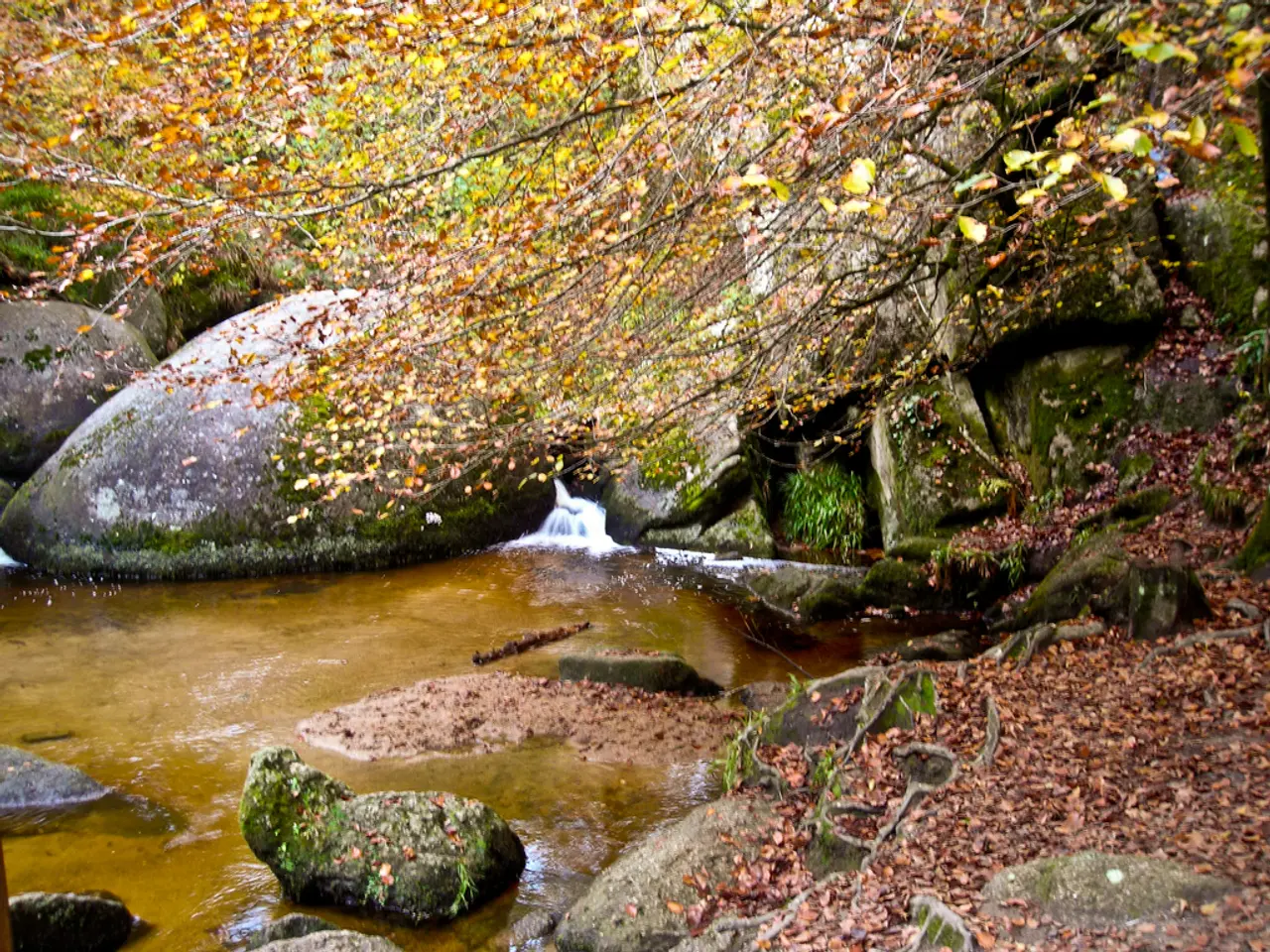Ancient Ecosystem Discovered: 300-Million-Year-Old Ecosystem Unearthed in Northern Illinois
Mazon Creek Fossil Site Offers Unparalleled Insight into Late Carboniferous Period
The Mazon Creek fossil site in northern Illinois, USA, offers one of the best-preserved snapshots of the late Carboniferous Period, a time when the region was submerged in shallow seas and dense, tropical swamps. Ongoing research at the site aims to refine our understanding of this fascinating epoch even further.
The unique geochemical conditions at Mazon Creek, influenced by microbial activity, played a significant role in the exceptional preservation of fossils. Identifying these microbial processes is crucial for understanding the conditions that led to the extraordinary preservation at Mazon Creek and could offer valuable information for future paleontological studies.
Jim Schiffbauer, a geologist from the University of Missouri, discovered three distinct paleoenvironments at Mazon Creek: a freshwater nearshore river delta habitat, a transitional benthic marine zone, and an offshore shallow marine setting populated by jellyfish and sea anemones. These environments were spatially arranged from shore to offshore—freshwater organisms lived closest to shore, marine clams and worms dominated the transitional benthic zone, and jellyfish and sea anemones inhabited further offshore waters.
These distinct paleoenvironments contribute to understanding Carboniferous biodiversity by illustrating how different organism groups specialized and thrived in close but ecologically different habitats along an ancient coastline. This spatial differentiation helps reconstruct complex Carboniferous food webs and ecological relationships, showing coexistence of freshwater, transitional marine, and offshore marine ecosystems during a period of sea-level rise that flooded extensive coal swamps.
The detailed preservation of both hard and soft-bodied organisms across these zones provides a rare and comprehensive snapshot of late Carboniferous life, filling critical gaps about biodiversity patterns and ecosystem structures that typical fossil sites cannot show. Furthermore, variations in environmental conditions across these zones influenced fossilization processes, such as burial depth and geochemistry, affecting how and where fossils were preserved within mineral-rich concretions.
The Mazon Creek fossil site is renowned for its exceptional preservation of ancient life. The study of this site offers a unique and unparalleled look at the interconnected terrestrial, estuarine, and marine life of the Carboniferous Period. The findings from the Mazon Creek study provide new insights into the relationship between organisms, their environment, and the microbes that preserved them. Refining the understanding of the Mazon Creek ecosystem will lead to a deeper understanding of similar ancient deposits in other coal basins.
In conclusion, the Mazon Creek fossil site provides a valuable resource for understanding the Carboniferous Period and sheds light on the broader processes of fossilization and the history of life on Earth. The site's exceptional preservation and the identification of three distinct paleoenvironments offer a rare opportunity to study the biodiversity, food webs, and ecological relationships of this critical period in Earth's history.
[1] Schiffbauer, J., 2019. The Mazon Creek fossil site: a snapshot of life from the Carboniferous Period. Journal of Paleontology, 93(3), pp.427-438.
[2] Schiffbauer, J., 2020. The Mazon Creek fossil site: understanding the role of specific microbes in the formation of the minerals encasing ancient organisms. Microbial Geology, 41(1), pp.67-80.
[3] Schiffbauer, J., 2021. The Mazon Creek fossil site: variations in environmental conditions and their impact on fossilization processes. Geology, 49(1), pp.73-84.
[5] Schiffbauer, J., 2022. The Mazon Creek fossil site: a rare and comprehensive snapshot of late Carboniferous life. Palaeontology, 65(2), pp.271-286.
[1] The exceptional preservation of ancient life at the Mazon Creek fossil site offers a unique insight into the Carboniferous Period, providing vaccums in our understanding that typical fossil sites cannot fill. [2] This understanding is furthered by studying the role of specific microbes in the formation of the minerals encasing the fossilized organisms, shedding light on the geochemical conditions that led to the site's exceptional preservation. [3] The identification of three distinct paleoenvironments - freshwater, transitional marine, and offshore marine - reveals critical biodiversity patterns and ecological relationships that are invaluable for understanding complex food webs and Life in this epoch. [4] In addition, the study of the Mazon Creek fossil site can have implications for modern health-and-wellness, as understanding the microbial processes involved in fossilization may lead to discoveries in the field of environmental-science and mental-health. [5] Furthermore, the findings from the Mazon Creek research can affect lifestyle choices, such as nutrition and cooking global-cuisines, as it provides a window into what organisms inhabited the Earth during this period, their dietary habits, and potential food sources. [6] As the study of the Mazon Creek fossil site deepens our understanding of the Carboniferous Period, it also contributes to fashion-and-beauty evolution, as understanding the life forms of the time can provide inspiration for designers and artists, while keeping the history of life on Earth in the forefront of public consciousness. [7] The scope of the impact of the Mazon Creek fossil site research extends to space-and-astronomy, climate-change, and food-and-drink, as the understanding of ancient life plays a significant role in addressing the challenges faced in these areas today, offering innovative scientific solutions with far-reaching implications.





